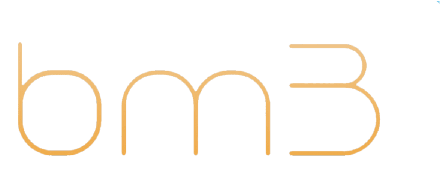bootmod3 Map Editor Features Overview
4800+ tuning tables available on S55, 4300+ tables on N55-EWG and 4800+ tables on N55-M2 CustomROM (1000s for other vehicle models) for tuning between CORE and RELATED tables on each ROM version
Thousands of tables available for any existing non-CustomROM maps
Table categorization done by splitting tables into two main categories: CORE and RELATED
CORE tables represent tables most frequently used throughout tuning lifecycle
RELATED tables represent functionally related tables as per research on DME logic and A2L functions
Tables Tree showing all Core tables with Related tables underneath for ease of research/browsing
Integrated Table Descriptions for all Core tables
Descriptions are interactive. When other tables are referenced in the description text they can be clicked on and tables opened for review/edit/compare/import from version history
Related Tables tab on any open Core table shows all functionally related tables
Related tables tab is interactive. Any related tables shown can be clicked through and opened for review/edit/compare/import from version history
Integrated Version History at Map and Table levels - Compare or restore with any prior saved map version by importing a complete map or checking version history at the individual table level
Integrated Datalogs for Tune Requests and Self-Tuning
Integrated Live Dash for monitoring and logging
Dash remains hidden on the right of the screen until opened for use
Datalogs accessible through Datalogs Tab after logging with the integrated dash without leaving the editor
Without leaving editor and while dash is running, easily toggle between Metric, Imperial units and relative/absolute pressure unit representation
In cases vehicle connection changes from one vehicle to another, the available channels listing updates with new channels appropriate for the connected vehicle
Logs captured are automatically uploaded to the end-users account and made available on the Tune Request’s Datalogs tab for review
Integrated Map Configuration screen for Tune Requests - tuners can update Map Configuration on any custom tune request on behalf of end users
Open/Import screen across My Maps, Tune Requests and Free Reference Maps.
Maps shown with advanced filtering per column for all table listings making it easy to find what you’re looking to import/compare against
Filter search and Multi-select-to-delete any existing unwanted maps under My Maps
All Tune Requests are shown in the Tune Request tab regardless of their current status allowing for filtering on any in progress and previously closed Tune Requests
Free Reference Maps Tab - shows various maps made available for import into your existing maps for learning/comparison
New Ability to import across different engine types along with previous cross ROM import support
View Tune Request comments before opening the map for the tune request and respond when no map changes are required
Filter-select tables at Import by Name, Table/Map ID and Size
Search Table Tree by Table/Map ID
Flash open Tune Requests to connected vehicles directly from the Authorized Tuner account
Run LiveDash and datalog any connected vehicle by Authorized Tuners
Save Tune Requests under My Maps in the Tuner account when looking to save a reference map for later use
30+ keyboard shortcuts to speed up everything from map opening, table commit/undo changes, math functions, viewing tune request comments, switching between Editor, Datalogs, Version History tabs, and many others..
New Table Editing Math Functions:
Horizontal, vertical and 4-way interpolation smoothing functions added based on WinOLS interpolation behaviour
Increment/Decrement by smallest factorable unit
Increment/Decrement/Multiply/Divide by value entered in cell
Increment/Decrement by % value
View % differences before committing changes
Hover over Undo button to view current/previous data in a table before commit
Various ‘under the hood’ performance enhancements to editor functionality
Warning on close browser or back button when inside editor
Maps, tune requests, datalogs listings all show current user’s timezone date format (e.g. Tuner will see end user’s logs in their current local time zone, while end user sees the listing in their local timezone).
Old Tune Requests screen removed
